Last updated on June 5th, 2023
The Boston Terrier is a fine breed dubbed “The American Gentleman”. Refined behavior and friendly nature make it the perfect four-legged companion. It even looks stylish with its short coat mimicking an always-on tuxedo. No wonder people love the breed, including children, soldiers, and presidents. Despite viral moments, many are still unfamiliar with this dapper dog.
40 Interesting facts about Boston Terriers
Built
1. Boston Terriers are compact, muscular dogs. They usually stand 15 to 17 inches tall, but some are as short as 9 inches. They weigh only 6 to 25 pounds. Traveling owners can carry them around with ease.
Color!
2. The breed has a short and shiny coat. The chest and muzzle are white, while most of the body has a dark shade – black, brindle, or seal. These markings create the illusion of permanent formal wear.
Head and Muzzle
3. The square head has an arched neck and perked ears, always ready to obey commands. Their short muzzle usually has no wrinkles.
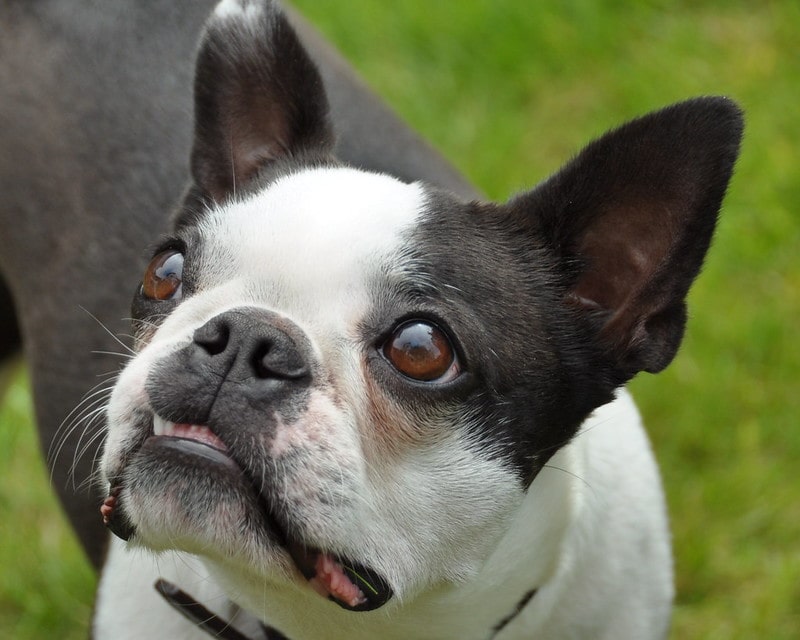
Eyes!
4. Boston Terriers are known for their large round eyes. These are set far apart on dark patches, with a long white band between them.
Short tails!
5. Don’t expect to see much tail-wagging. These have short tails that don’t even reach two inches in length. Some are straight, while others are curly. A few have a corkscrew shape.
Ancestors
6. A list of facts about Boston Terriers won’t be complete without an origin story. In the 1860s, William O’Brien of Boston bought a bulldog-terrier mix from England. He sold it to Robert Hooper in 1875. The dog named Judge later became the ancestor of the modern breed.
A Boston Terrier named Judge
7. Judge was a small but tough dog that weighed around 32 pounds. He had a square head and a white facial stripe – features he would pass down to future generations.
New Offspring
8. Breeders wanted to produce a tiny companion pet. They paired Judge with a white female bulldog named Gyp. She weighed 20 pounds, with a strong body and a blocky head.
Birth of the Boston Terrier Club of America
9. The resulting breed proved popular among dog lovers. Owners established the Boston Terrier Club of America in 1891. The American Kennel Club recognized it two years later.
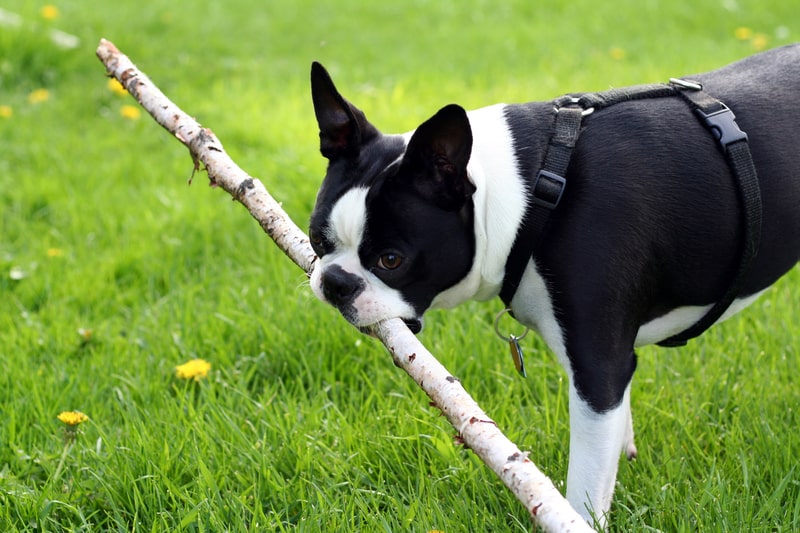
Gains attention
10. The Boston Terrier became a beloved figure in the city. Massachusetts picked it as the official dog of the state. Boston University declared it the official mascot in 1922.
A Boston Terrier and the president of Finland
11. The president of Finland, Sauli Niinisto, owned a pet Boston Terrier named Lennu that accompanied him at many events. The adorable dog went viral in 2017 after a US visit and became the subject of a humorous meme.
Military asset
12. In World War I, a stray Boston Terrier known as Sgt. Stubby became the most decorated military dog. The 102nd Infantry adopted him during training and smuggled him to France. Stubby warned soldiers about gas and missile attacks. He found wounded Allies and captured a German spy.
A dog’s remains are in the National Museum of American History
13. The remains of Sergeant Stubby are in the National Museum of American History at the Smithsonian Institution. His heroic deeds inspired an animated film released in 2018. Watch it to learn more Boston Terrier facts.
The largest dog eyes
14. Bruschi the Boston Terrier holds the Guinness World Record for the largest dog eyes. Each measures 28 millimeters or 1.1 inches. He cannot see what’s in front of him, only objects at the peripheries.
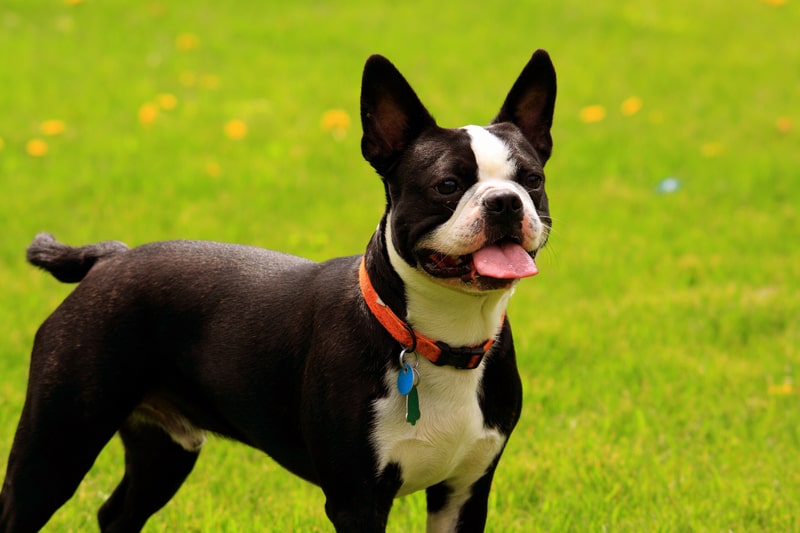
A hereditary trait!
15. A few Boston Terriers have a dark dot called the Haggerty Spot. It is a hereditary trait dating back to one of the first breeders of these dogs. The Haggerty Family began in the early 1900s when the spot was dubbed the Kiss of God.
Fond of humans
16. The Boston Terrier is a gentle dog that likes the company of humans. It is a good choice for families with children or seniors. Living with other pets is not a problem if it is properly socialized.
Anxious when lonely
17. These dogs are prone to separation anxiety. They feel happy around people, and they get lonely without companions. Training can reduce their stress, but the breed does better in homes where they are never alone.
Entertaining and humorous!
18. Most Bostons have a friendly and carefree personality. They are eager to please their owners and provide entertainment with their sense of humor. These curious canines may follow people around, even to the bathroom!
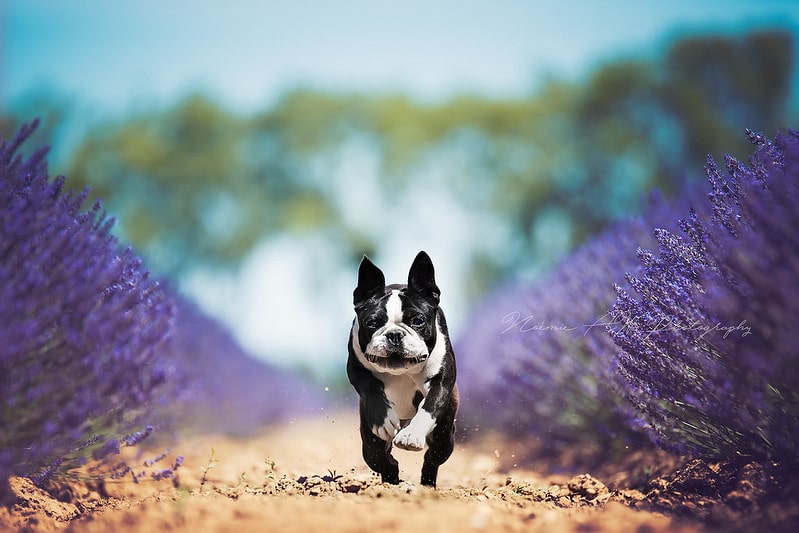
Quiet and composed
19. These dogs are generally quiet. They are unlikely to cause problems with neighbors, even in dense places like apartments. They only bark when necessary if trained at an early age.
Sense of care and protection
20. Aggressive behavior is rare. A few males may challenge other dogs if they sense an invasion of their territory. They may also become protective of their owners due to perceived threats. Ask a breeder about other Boston Terrier facts you need to know before getting one.
Water is their lifeline
21. Boston Terriers require constant access to fresh water. Keep an eye on their liquid supply to replenish it on time. Maintain the cleanliness of this container.
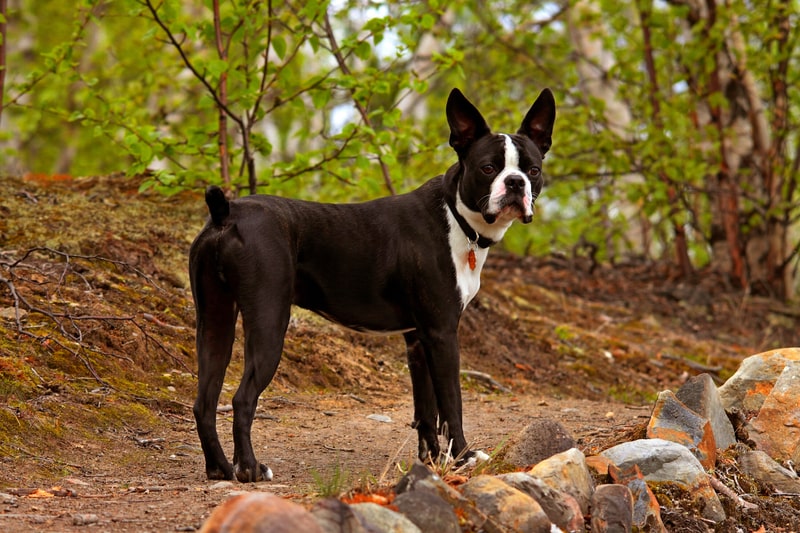
Diet is crucial
22. The breed needs balanced nutrition for optimum health. Owners should provide a high-quality diet in ample amounts, usually served twice per day. A third meal may be suitable for hyperactive dogs.
Beggars, literally!
23. Bostons have a big appetite. They often beg owners for handouts, and they can be hard to resist. An abundance of treats may lead to being overweight. It is easy to breach the threshold because of their small frame.
Health is wealth
24. Most vets recommend dry food made for small breeds for easy chewing. They don’t need special supplements, but products for better joint and skin health are fine.
Activity is important
25. Boston Terriers have a moderate energy level. They should not sit still all day. Owners may take them on two brisk walks to meet their daily exercise needs. They also love to play fetch and frisbee.
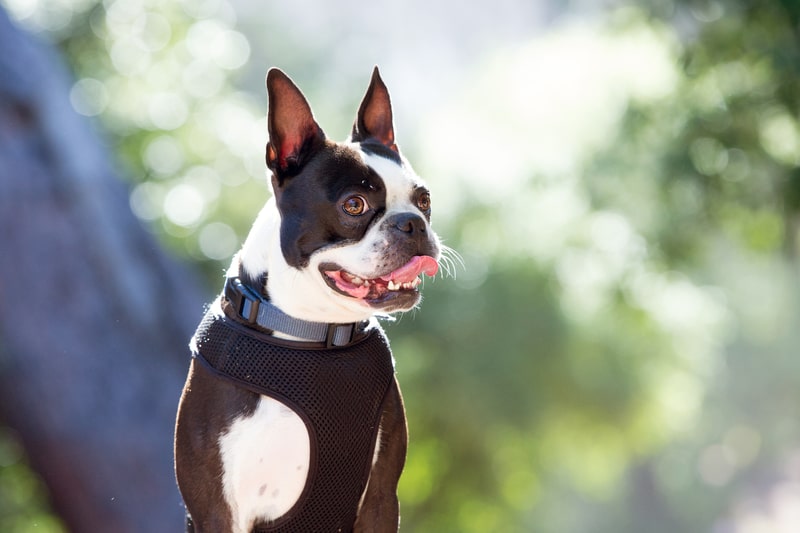
Some health issues
26. Boston Terriers are prone to eye problems, including cataracts, glaucoma, and corneal ulcers. Their bulging eyes tend to suffer from dryness. Watch out for signs of irritation due to environmental factors like pollen, dust, and low humidity.
Deafness
27. Deafness since birth occurs more frequently in Boston Terriers than other dog breeds. This congenital condition may involve one or both ears. Consult experts on special care.
Hereditary complications
28. These dogs may inherit anatomical issues from their parents. For example, some exhibit patellar luxation in which the kneecap slips out of place. It makes them limp and compensate with odd leg movement.
Brachycephalic syndrome
29. Flat-faced breeds like the Boston Terrier may develop brachycephalic syndrome. It consists of several upper airway abnormalities that make breathing difficult.
Eye injuries may happen
30. They are susceptible to eye injuries. Their playful nature may put them in contact with sharp objects like toys and thorny plants. Becoming aware of these facts about Boston Terriers should help owners keep them safe.
Quick and intelligent responders
31. Boston Terriers are highly intelligent. They respond well to training, quickly following instructions if given ample rewards. However, some might be stubborn and require more patience than usual.
A harness for control
32. Professional trainers use a well-fitted harness when leading these dogs across various activities. It provides control while reducing pressure on the trachea, making it more comfortable than collars.
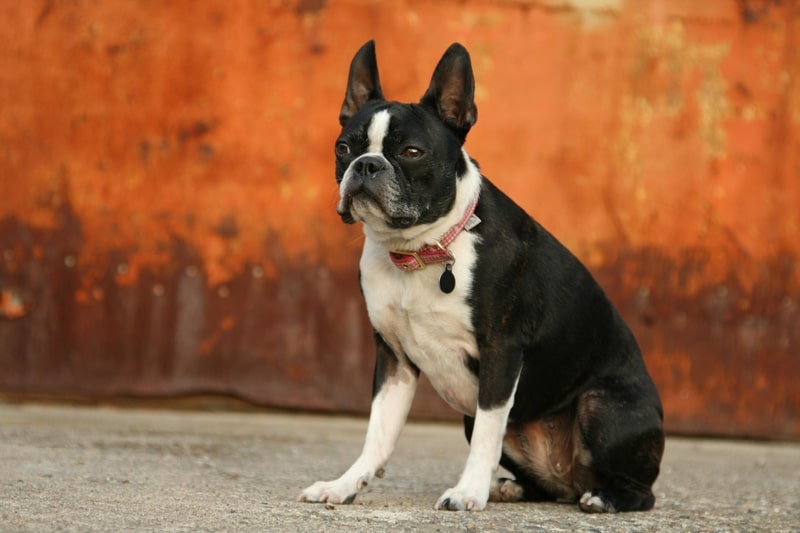
Learn and shine!
33. The breed participates enthusiastically in physical activities. Trainers can make them complete various agility and obedience work. They can also perform disc catching, dock diving, and lure coursing.
Treat them well!
34. Boston Terriers respond well to positive reinforcement. Instead of using harsh punishments for corrections, provide praise and treats to encourage desirable behaviors. Use consistent commands to avoid confusion.
Exposure always helps!
35. Training should begin as soon as possible. Puppies can learn simple commands and good manners. Owners must also expose them to different people, places, and pets.
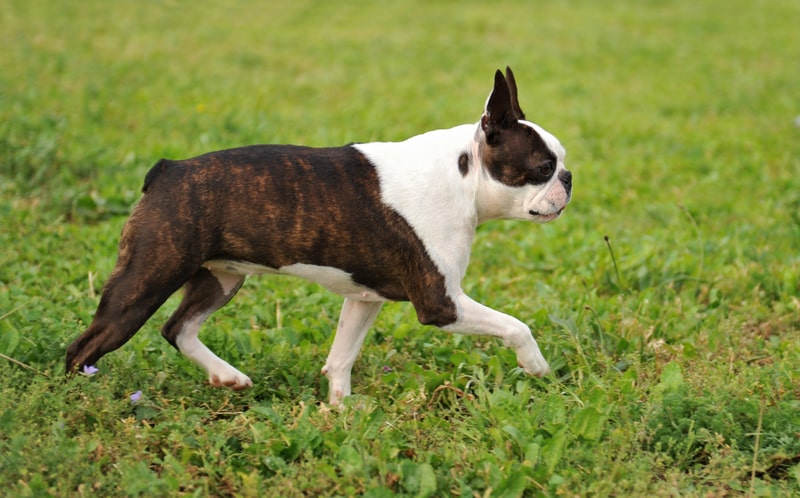
Save them from heat
36. Since they are brachycephalic, people should be wary about things that could affect their breathing. Avoid prolonged exposure to high heat. Set summer exercises early morning and late afternoon.
and Cold!
37. Their short fur makes Boston Terriers intolerant of extreme cold. Owners must provide them with appropriate clothing to regulate their body temperature. Tiny coats and sweaters are readily available for these fashionable pets.
Pregnant mothers
38. Giving birth is an ordeal for Boston Terriers. Most of them require a Cesarean section to help the mothers. In a survey, more than 80% of litters in the UK Kennel Club were born this way.
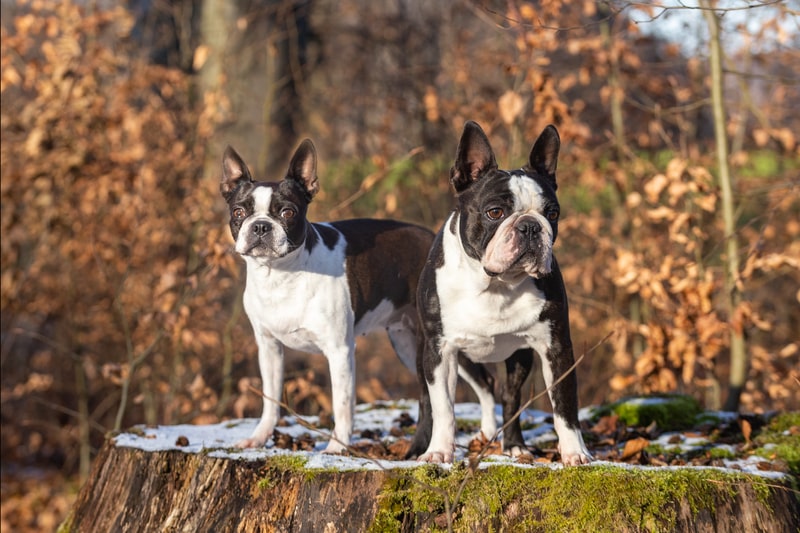
Coat shedding
39. The short coat sheds moderately. Weekly brushing with a mitt or soft brush is enough to keep it looking healthy. It should also reduce shedding. A monthly bath is often sufficient.
Life expectancy
40. Owners of this breed can expect a lifespan of 11 to 13 years. Life expectancy is higher for vaccinated and dewormed dogs with a slim waistline. Since most health issues are hereditary, pick pups with healthy parents.
